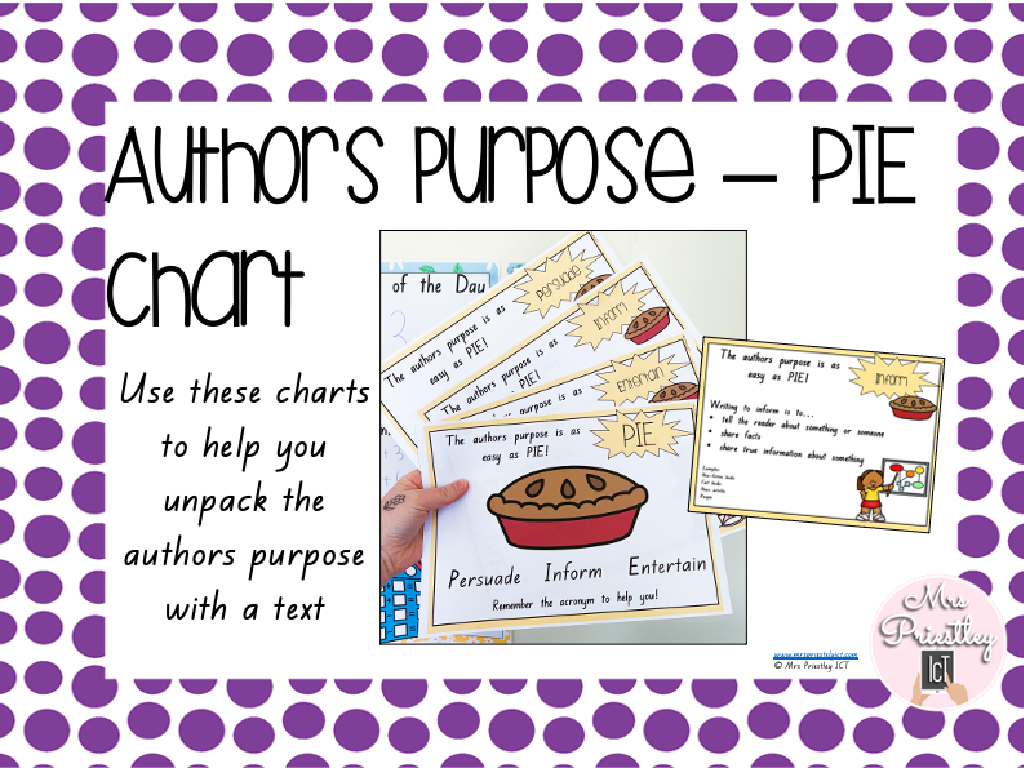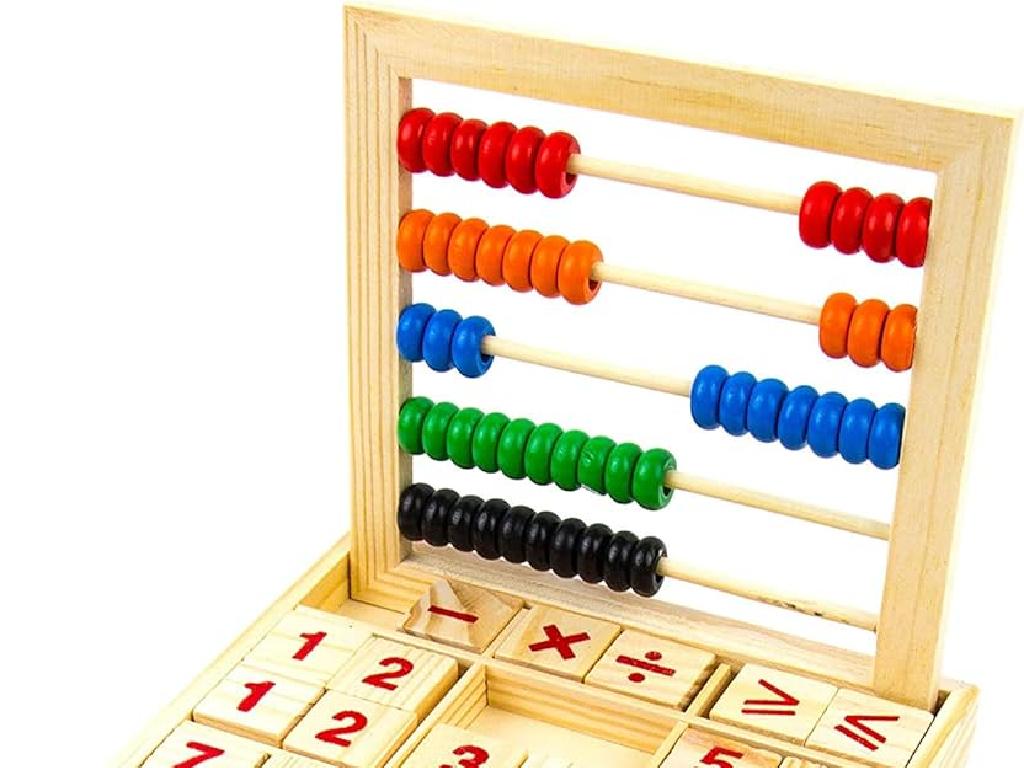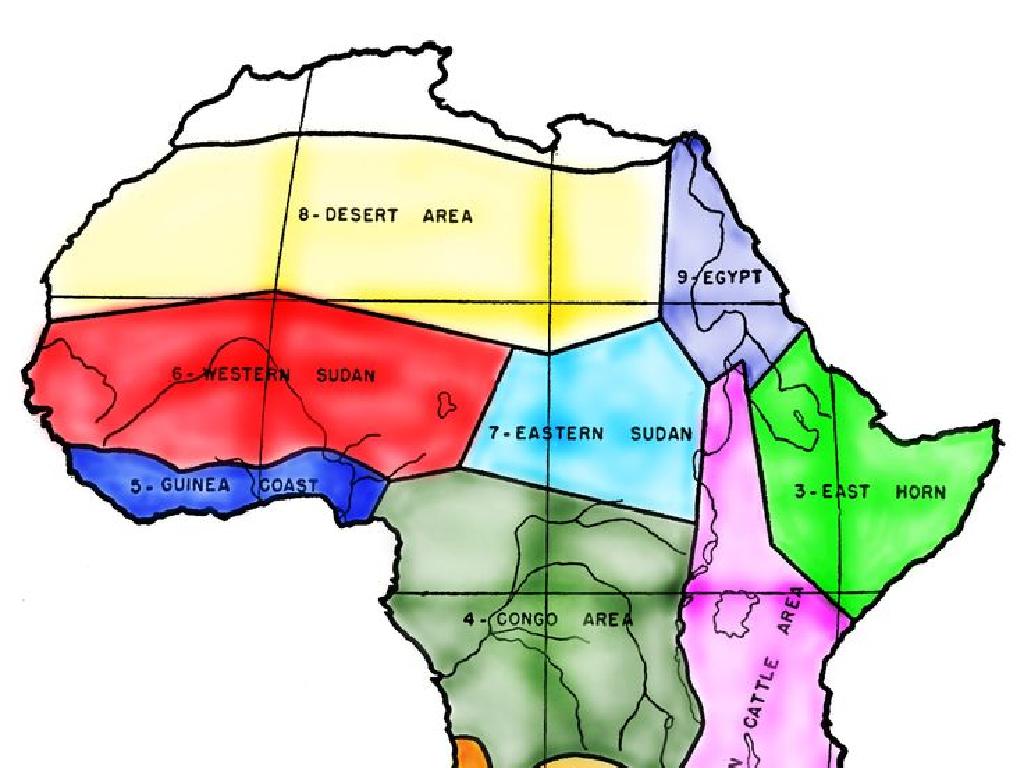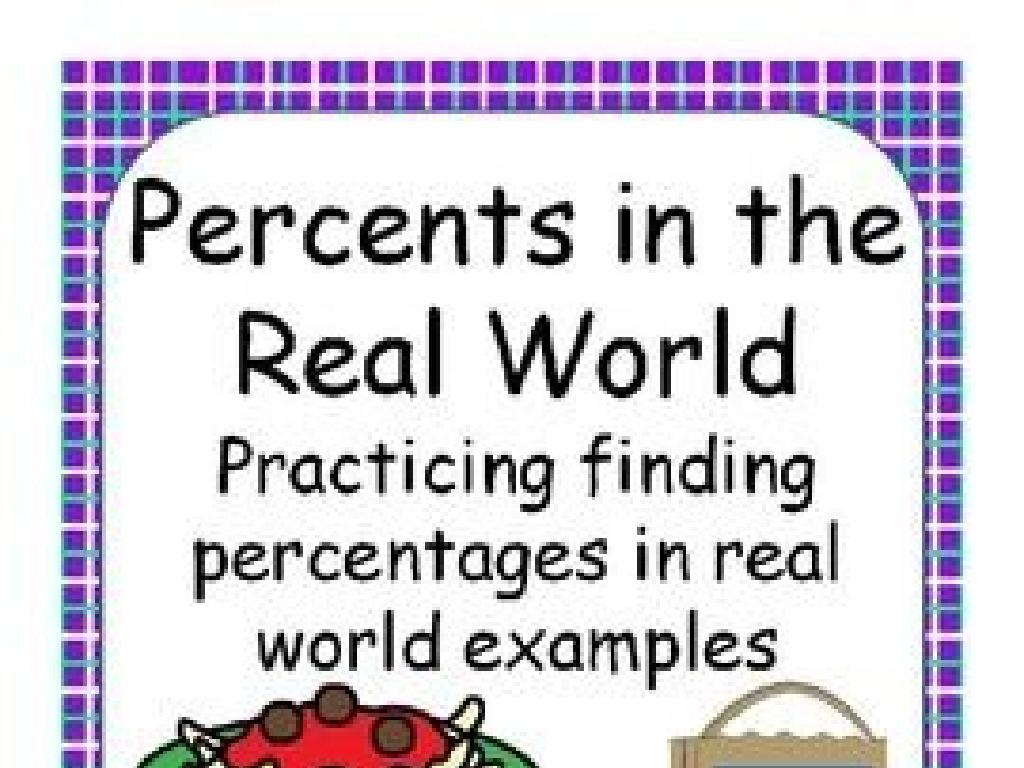Show Numbers With Cubes - Up To 7
Subject: Math
Grade: Pre-k
Topic: Numbers And Counting To 7
Please LOG IN to download the presentation. Access is available to registered users only.
View More Content
Welcome to Numbers with Cubes!
– Greet our little mathematicians
– Learn numbers using cubes
– Cubes help us visualize numbers
– Counting cubes up to 7
– Each cube represents one unit
– Fun with numbers and cubes
|
This slide is designed to introduce Pre-K students to the concept of numbers and counting using a tangible method – cubes. Start the lesson with a warm greeting to make the children feel excited about learning math. Explain that cubes can be used as a fun tool to understand and visualize numbers. Show them how to count using cubes, starting from one and going up to seven, ensuring each child has a chance to interact with the cubes. The activity should be engaging and hands-on to help solidify their understanding of the numbers 1 through 7. Encourage the children to stack the cubes as they count to help with their motor skills and to reinforce the concept of quantity.
Exploring Numbers with Cubes
– Numbers help us count
– Numbers are used daily
– Learn numbers 1 to 7
– Counting with cubes
– Use cubes to visualize 1 to 7
|
This slide introduces the concept of numbers to Pre-K students, emphasizing their importance in everyday life and focusing on the numbers 1 to 7. Start by explaining that numbers are a tool we use to tell how many of something we have. Show physical examples of numbers being used in daily life, such as counting fruits, toys, or even steps. Then, transition to showing the numbers 1 to 7 using cubes, which will help the students visualize and understand the quantity each number represents. Encourage the students to participate by counting along with you as you display the cubes for each number. This hands-on activity will help solidify their understanding of the numbers 1 to 7.
Counting with Cubes: Numbers up to 7
– Each cube equals one number
– Cubes together show numbers
– Stack cubes to form numbers 2 to 7
– One cube for the number 1
– Practice counting up to 7
– Use cubes to count from 1 to 7
|
This slide introduces the concept of using physical objects, such as cubes, to represent numbers, which is a foundational skill in early math learning. Start by explaining that each cube stands for one unit. Demonstrate how to combine cubes to represent numbers from 2 to 7. Show that one cube is used to represent the number 1. Engage the students by having them practice counting with cubes, starting at 1 and building up to 7. This hands-on activity will help solidify their understanding of numbers and counting. Encourage students to touch and move the cubes as they count, reinforcing the one-to-one correspondence between the cubes and numbers.
Building Numbers with Cubes
– Stacking cubes to make 2
– Place one cube on top of another
– Two cubes represent number 2
– Now you can see and touch number 2!
– Adding one more cube for 3
– Put another cube on the stack, what number is it now?
|
This slide is designed to help Pre-K students visually and physically understand the concept of counting and building numbers using cubes. Start by demonstrating how to stack two cubes to represent the number 2. Emphasize that the two cubes they see are the same as the number 2 they count. Then, encourage students to add one more cube to the stack and help them recognize that the stack now shows the number 3. This hands-on activity aids in developing their counting skills and number recognition. For the activity, provide each student with a set of cubes and guide them through the process. Offer praise as they successfully build the numbers.
Counting Cubes Up to 7
– Adding cubes to make numbers
– Four cubes show the number 4
– One, two, three, four cubes!
– Counting cubes up to 7
– Let’s add more to count 5, 6, and 7
– Practice counting together
– We’ll count as a class, one number at a time
|
This slide is designed to help Pre-K students visualize the concept of numbers by using cubes. Start by explaining that adding cubes one by one can represent numbers. Show them four cubes and count together to establish the number 4. Then, encourage the students to predict how many cubes we need to make 5, 6, and finally 7. Use physical cubes if possible, or representations of them, to count together as a class. This hands-on activity will help solidify their understanding of numbers and counting. For the activity, you can have different sets of cubes for students to count and group, or have them draw representations of cubes up to 7. Make sure to praise their efforts and correct gently if they make a mistake.
Practice Time: Counting with Cubes!
– Start with one cube
– Add cubes up to seven
– Each cube represents one
– Build a tower from 1 to 7
– Visualize counting with a growing tower
|
This slide is designed for a hands-on activity where students will practice counting and number recognition using physical cubes. Start by showing them a single cube and explaining that it represents the number one. Then, have them add cubes one by one, counting aloud until they reach seven. This activity helps solidify the concept of one-to-one correspondence and number sequencing. For the teacher: Prepare enough cubes for each child and ensure they have space to build their towers. Walk around to assist and praise the students as they count. Offer variations, like starting from seven and removing cubes one by one, to reinforce the concept of subtraction.
Class Activity: Building Cube Towers
– Let’s build cube towers
– Each tower represents a number
– One cube for number 1, two cubes for number 2, and so on
– Towers will range from 1 to 7
– Who can make the 7-cube tower?
– Show your 7-cube tower to the class!
|
This activity is designed to help Pre-K students visually and physically understand the concept of numbers up to 7. Each student will be given a set of cubes, and they will be asked to build towers that represent numbers from 1 to 7. This hands-on activity not only reinforces counting skills but also aids in the development of fine motor skills. For the number 7, challenge the students to see who can build a tower with 7 cubes the fastest. Provide assistance to students who struggle and ensure that each child is praised for their effort. Possible variations of the activity could include building towers in ascending or descending order, or even identifying which tower is taller or shorter.
Review Time: Counting Cubes Up to 7
– Review our cube towers
– Look at the towers we built with cubes
– Count together from 1 to 7
– We’ll say the numbers as we point to each cube
– Great job counting!
– Practice makes perfect
– Keep practicing to get even better!
|
This slide is meant to review the concept of counting using physical objects, such as cubes, to help Pre-K students visualize numbers. Start by showing the cube towers to the class and encourage them to count aloud together. This reinforces their understanding of the sequence of numbers and the one-to-one correspondence between the cubes and the numbers. Praise their effort to instill confidence. The activity should be interactive and fun, allowing the students to feel comfortable with numbers. As an extension, you can ask the students to build their own towers and count the cubes, or even to dismantle the towers one cube at a time while counting backward.
Goodbye and Great Work!
– Amazing work with numbers today!
– Practice counting with toys or snacks
– Use items like blocks or crackers to count
– Keep up the good counting at home
– Excited to see you next time!
– We’ll have more number fun in our next class
|
This slide is meant to conclude the lesson on counting with a positive reinforcement for the children, praising their efforts in learning numbers up to 7. Encourage them to continue practicing at home using familiar items such as toys or snacks, which makes learning more relatable and fun. The slide should leave the children feeling accomplished and looking forward to the next lesson. As a teacher, prepare to give examples of counting activities they can do at home and remind them of the joy of learning. This will help instill a love for math early on.






